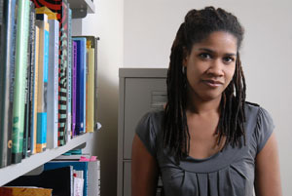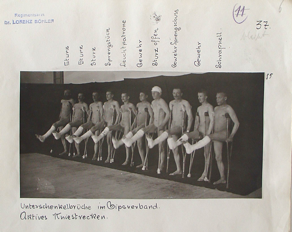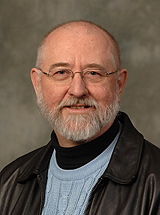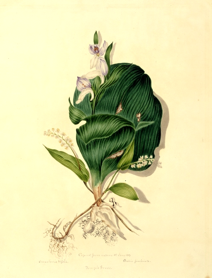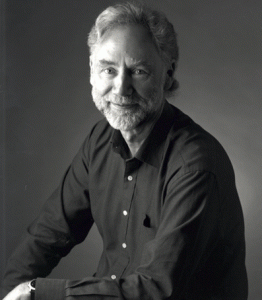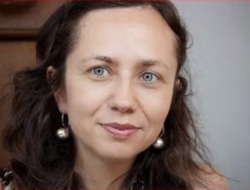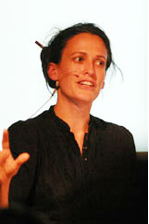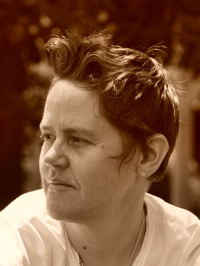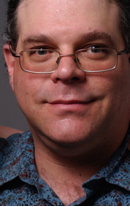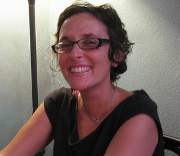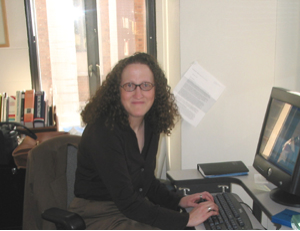The lecture series would like to thank the Dean of Arts Development Fund at McGill and a generous anonymous donor for contributing to the series.
Fall 2010
Krista A. Thompson, Associate Professor, Northwestern University.
Time and Location: Thursday September 23 at 5:00 pm at the Department of Art History and Communication Studies, room Arts W-215.
Title: "Performing Visibility: Street Photography, Black Youth and the Art of Being Seen"
Abstract: Since the mid-1980s photographers working in a genre known as street photography have erected makeshift photography studios across black urban communities in the United States and the Caribbean. The studios are comprised of hand or spray-painted canvases against which photographers take Polaroid and digital pictures. Typically the backdrops portray either landscapes of leisure or high-end consumer goods. In the genre, intriguingly, the process of posing publicly and being seen being photographed has become as important, if not more so, than the creation of a physical image. This paper examines how and why the street photographs seem to occasion a transformation in the physicality and temporality of photography. It also frames the street photograph as inhabiting a space between the photographic and painted, the still and moving image, the real and artificial, digital and analogue, the material and ephemeral, the hyper-visible and unvisible.
Biography: Krista A. Thompson (Ph.D., 2002, Emory University; Associate Professor) teaches courses on the arts of the African diaspora, critical race theory, visual cultures of colonialism and postcoloniality, and global histories of photography, as well as courses on contemporary Caribbean and African art. She is the author of An Eye for the Tropics: Tourism, Photography, and Framing the Caribbean Picturesque (Duke University Press, 2006), an examination of the colonial imaging of the Anglophone Caribbean in photographs and its effects on landscape, history, race, governmentality, and contemporary art. Thompson has published in Art Bulletin, American Art, The Drama Review, and Small Axe (where she serves on the editorial collective). She is co-editor, with Huey Copeland and Darcy Grimaldo Grigsby, of a special issue of Representations on New World Slavery and the Visual Imagination (Winter 2011). She is currently working on a book titled The Visual Economy of Light in African Diasporic Practice on visual culture and black urban youth in the Caribbean and United States, which is forthcoming from Duke University Press. The publication investigates the intersections among vernacular forms of photography, performance, and contemporary art. Thompson has received postdoctoral fellowships from the J. Paul Getty Foundation (2008), the Institute for the Humanities, University of Illinois, Chicago (2004), and the David C. Driskell Center for the Study of the African Diaspora (2003). In 2009, Thompson received the David C. Driskell Prize from the High Museum of Art in Atlanta, Georgia, which recognizes "original and important contributions to the field of African-American art or art history."
Thomas Schlich, Professor and Canadian Research Chair in the History of Medicine, McGill University.
Time and Location: Thursday, October 21, 5:30 pm at the Department of Art History and Communication Studies, room Arts W-215.
Title: "Photography, Body function and Rationalized Fracture Care (WWI and 1920s Vienna)"
Abstract: When the Austrian surgeon Lorenz Böhler created his machine-like system of rationalized fracture care behind the trenches in WWI, he documented the outcome of his treatment in a striking way. He took photographs of his patients, lined up naked, and performing synchronous movements . In my talk, I am going to explore the rationale of this unusual way of representing bodies. I will put Böhler's images in the context of contemporary orthopedic photography and Böhler's project of rationalized fracture care in particular, and discuss parallels and possible cultural resonances with scientific management and Vienna Modernism.
Biography: Thomas Schlich is Professor and Canada Research Chair in History of Medicine (renewed 2007) at the Department of Social Studies of Medicine at McGill University. After working as a physician at the University Hospital in Marburg, Germany, he pursued his historical interests in different research and teaching positions in Cambridge, England, Stuttgart, Germany, and Freiburg, Germany. Before moving to Montreal in September 2002 he held a Heisenberg Fellowship of the German Research Council (DFG). He has worked on surgery's connections to science and industry in the twentieth century, the history of organ transplantation, bacteriology, disease concepts in modern medicine, physiology and the relation of medicine and Judaism. His main research focus is on the rise of modern surgery (1800-2000). Combining medical history with approaches from the history of technology as well as science and technology studies he examines how surgery achieved the high level of technical effectiveness it has today. At the same time he looks at how surgery became built into the fabric of modern society and culture. His work thus aims at providing a new and better basis for understanding surgery's current status as the most important but least questioned technique of body manipulation.
John Downing.
Time and Location: For further information, please follow this link.
Kristina Huneault , Research Chair in Art History, Concordia University.
Time and Location: Thursday, November 4, 5:30 pm at the Department of Art History and Communication Studies, room Arts W-215.
Title: "Diversity: Difference, Identity and the Botanical Encounter"
Abstract: This paper offers a philosophical exploration of the registers of sense and meaning intrinsic in botanical illustrations produced by women artists in nineteenth and early-twentieth century Canada. Beginning from the observation that visual elements of difference and repetition are key factors in the pictorial organization and appeal of such images, my aim is to participate in a scholarly conversation that has positioned botanical drawings as instruments of identity, while simultaneously suggesting a new perspective from which to develop that conversation further.
Concepts of identity have been key to understanding botanical art. From their scientific and taxonomical functions to their role as historical agents of colonization, botanical drawings have been closely linked to processes of identification, naming, and claiming. In Learning to Draw (2000) Ann Bermingham has taught us to see how the practice of botanical drawing also contributed to a specifically feminine identity during the nineteenth century. I seek to build on Bermingham's insight, but by grounding my analysis in the images' visual organization rather than their historical and discursive context, I am led to other, more philosophically oriented, conclusions. These relate to the ways in which botanical drawings mobilize elements of sameness and difference that consequently open a vantagepoint onto the complex experience of the feminine self in relation to the world. While, through their Latin inscriptions and controlled outlines, botanical images participate in a rigorously upheld logic of sameness, their qualities of brushstroke and seriality also instate pictorial effects of differentiation and repetition at their very core, prompting questions about the ontological primacy of identity that are pertinent to feminist thought. Through their embrace of empiricism, moreover, botanical images raise the liberating possibility that experience may exceed our preexisting conceptual frameworks for it.
Biography: Kristina Huneault is a Concordia University Research Chair in Art History. She holds an M.A. in Canadian Art History from Concordia (1994) and a Ph.D. from the University of Manchester (1998), where she was a Commonwealth Scholar. She has taught at Concordia since 1999, and was the University's emerging research fellow in 2004. At the undergraduate level, Dr. Huneault has taught the introductory course on Western Art, as well as courses on feminism, methodology, and 19th and 20th century European Art. At the graduate level she focuses on methodology and the intersection between theory and history. She teaches in both the MA and PhD programs, and has offered courses on feminism and Canadian women artists, semiotic reading practices, the philosophy of subjectivity, and the writing of art history. Dr. Huneault's approach to art -- which bridges feminism and poststructuralism, psychoanalysis and social history -- considers how pictorial images participate in the construction of subjectivity. How do images help us understand the self in relation to others? In her first book Difficult Subjects: Working Women and Visual Culture, Britain 1880-1914 (Ashgate, 2002) this theme was considered in relation to images of labouring women, while in her current research she is exploring the visible traces of gendered subjectivity in artwork by historical Canadian women. Recent work on Helen McNicoll (Art History 27,2), Frances Anne Hopkins (Ashgate), and miniature painting (RACAR 30, 1-2; Manchester University Press) has been funded by SSHRC and FQRSC, and relates to her next monograph: Presence Through Absence: Gender in the Art of 19th c. Canadian Women. Other published writings include articles on the public display of working women in sweated industries exhibitions (2000); images of flower sellers in Victorian culture (1998); women in British trade union imagery (1996), and the war sculptures of Canadian artists Frances Loring and Florence Wyle (1994).
Laura DeNardis, Lecturer in Law, Research Scholar in Law, and the Executive Director of the Information Society Project at Yale Law School.
Time and Location: Thursday, November 11, 5:30 pm at the Department of Art History and Communication Studies, room Arts W-215.
Title: "Protocol Politics: The Globalization of Internet Governance"
Abstract: DeNardis will speak on the topic of her new book Protocol Politics: The Globalization of Internet Governance (MIT Press: 2009). The Internet has reached a critical point. The world is running out of Internet addresses. There is a finite supply of approximately 4.3 billion Internet Protocol (IP) addresses—the unique binary numbers required for every exchange of information over the Internet—within the Internet's prevailing technical architecture (IPv4). In the 1990s the Internet standards community identified the potential depletion of these addresses as a crucial design concern and selected a new protocol (IPv6) that would expand the number of Internet addresses exponentially—to 340 undecillion addresses. Despite a decade of predictions about imminent global conversion, IPv6 adoption has barely begun. IPv6 is not backward compatible with IPv4, and the ultimate success of IPv6 depends on a critical mass of IPv6 deployment, even among users who don't need it, or on technical workarounds that could in turn create a new set of concerns.
Protocol Politics examines what's at stake politically, economically, and technically in the selection and adoption of a new Internet protocol. Laura DeNardis's key insight is that protocols are political. IPv6 serves as a case study for how protocols more generally are intertwined with socioeconomic and political order. IPv6 intersects with provocative topics including Internet civil liberties, U.S. military objectives, globalization, institutional power struggles, and the promise of global democratic freedoms. DeNardis offers recommendations for Internet standards governance, based not only on technical concerns but on principles of openness and transparency, and examines the global implications of looming Internet address scarcity versus the slow deployment of the new protocol designed to solve this problem.
Biography: Laura DeNardis is a Lecturer in Law, Research Scholar in Law, and the Executive Director of the Information Society Project at Yale Law School. DeNardis is an Internet governance scholar and the author of Protocol Politics: The Globalization of Internet Governance (MIT Press: 2009), Information Technology in Theory (Thompson: 2007 with Pelin Aksoy), and numerous book chapters and articles. DeNardis received a Ph.D. in Science and Technology Studies (STS) from Virginia Tech, a Master of Engineering degree from Cornell University, and a Bachelor of Arts degree in Engineering Science from Dartmouth College.
Co-sponsored with McGill's Faculty of Law Center for Intellectual Property Policy, McGill's Department of Political Science, and McGill's Institute for the Study of International Development (ISID).
Terry Smith , Andrew W Mellon Professor of Contemporary Art History and Theory, University of Pittsburg.
Time and Location: TUESDAY, November 23, 5:30 pm at the Department of Art History and Communication Studies, room Arts W-215.
Title: "Contemporary Art: World Perspectives"
Abstract: Is "contemporary" the name of an art historical period that has succeeded modernism (and postmodernism), or does "contemporaneity" mean that periodization is past (an anachronism from modernity) both in the general culture and in art? Does it then follow, as many argue, that contemporary art can only be a kind of modernism that has outlived its time? Against this, there is the view that the multiple modernisms and non-modern practices within twentieth century art prefigure the diversity of contemporary art. This implies that shifts from modern to contemporary art occurred in distinct ways in different places, and that tracking these is an urgent art historical task. Looking directly at the present, we might ask whether or not contemporary conditions have reshaped our conception of "the world" (in planetary terms, for example, as worlds-within-the-world), and thus our conception of the currents manifest in global contemporary art? Are the evident interconnections between each region, people, city, even locality in the world today sufficient to enable us to speak of a new, contemporary phase in the "world" history of art? Or have these very connections led to distinctively contemporary kinds of art that, while resisting any fit into a unified, developmental picture, remain nonetheless subject to critical analysis and historical hypothesis? In this lecture Professor Smith will explore these questions in relation to the ideas offered in his recent publications, notably his books What is Contemporary Art? (University of Chicago Press, 2009) and Contemporary Art of the World: Late Modern to Now (Laurence King and Pearson/Prentice Hall, forthcoming).
Biography: TERRY SMITH, FAHA, CIHA, is Andrew W. Mellon Professor of Contemporary Art History and Theory in the Department of the History of Art and Architecture at the University of Pittsburgh, and a Visiting Professor in the Faculty of Architecture, University of Sydney. He is the 2009 winner of the Mather Award for art criticism conferred by the College Art Association (USA). During 2001-2002 he was a Getty Scholar at the Getty Research Institute, Los Angeles, and in 2007-8 the GlaxoSmithKlein Senior Fellow at the National Humanities Research Centre, Raleigh-Durham. From 1994-2001 he was Power Professor of Contemporary Art and Director of the Power Institute, Foundation for Art and Visual Culture, University of Sydney. He was a member of the Art & Language group (New York) and a founder of Union Media Services (Sydney). He is the author of a number of books, notably Making the Modern: Industry, Art and Design in America (University of Chicago Press, 1993; inaugural Georgia O'Keeffe Museum Book Prize 2009); Transformations in Australian Art, volume 1, The Nineteenth Century: Landscape, Colony and Nation, volume 2, The Twentieth Century: Modernism and Aboriginality (Craftsman House, Sydney, 2002); The Architecture of Aftermath (University of Chicago Press, 2006) and What is Contemporary Art? (University of Chicago Press, 2009). He is editor of many others including In Visible Touch: Modernism and Masculinity (Power Publications and the University of Chicago Press, 1997), First People, Second Chance: The Humanities and Aboriginal Australia (Australian Academy of the Humanities, 1999), Impossible Presence: Surface and Screen in the Photogenic Era (Power Publications and the University of Chicago Press, 2001), with Paul Patton, Jacques Derrida, Deconstruction Engaged: The Sydney Seminars (Power Publications, 2001, Tokyo: Iwanami Shoten, 2005), Contemporary Art + Philanthropy (University of NSW Press, 2007), and Antinomies of Art and Culture: Modernity, postmodernity and contemporaneity (with Nancy Condee and Okwui Enwezor, Duke University Press, 2008). He is working on Contemporary Art of the World: Late Modern to Now (Laurence King and Pearson/Prentice-Hall, 2011). A foundation Board member of the Museum of Contemporary Art, Sydney, he is currently a Board member of the Andy Warhol Museum, Pittsburgh. See www.terryesmith.net/web/
Sandra Gabriele, Assistant Professor, Concordia University.
Time and Location: Thursday, December 2, 5:30 pm at the Department of Art History and Communication Studies, room Arts W-215.
Title: "Newspapers and the Intermedial Imaginary"
Abstract: Though the endless speculation in contemporary print journalism and blogs might suggest otherwise, the dilemma of technological convergence and the problems that it poses for print newspapers are not new. History is rife with moments when newspapers colonized or adopted nascent communications technologies in the effort to remain relevant and competitive, only to find themselves transformed in the process. Drawing from a range of examples from newspapers, I will discuss what I'm calling an intermedial imaginary – moments when the newspaper envisioned ways that it could hybridize with other communications technologies in order to extend its significance as a cultural and economic entity, and to re-envision the process of communication itself through the forging of affective ties with its audience. What's at stake is the possibility of gaining an historically informed view on what a recent Harper's cover story declared the "Final Edition" of contemporary print newspapers.
Biography: Sandra Gabriele is Assistant Professor at Concordia University. She specializes in the study of journalism history and women's journalistic practices in Canada. Her current project (funded by the Social Sciences and Humanities Research Council of Canada), with Paul S. Moore, traces the history of the weekend newspaper in the United States and Canada as a key site of the emergence of popular culture and the mass public. Their first results looked at the emergence of special weekend editions in Toronto: "The Globe on Saturday, The World on Sunday," in the Canadian Journal of Communication (2009). Her research has appeared in Aether, Journalism Studies, and Journalism: Theory, Practice and Criticism.
Winter 2011
Marni Kessler, Associate Professor, University of Kansas.
Time and Location: Thursday, January 6, 5:30 pm at the Department of Art History and Communication Studies, room Arts W-215.
Title: "Edgar Degas' Family Gaze: Re-reading Le Pédicure"
Abstract: In Le Pédicure of 1872-73, Edgar Degas depicts his nine-year-old American niece Joe slumped impassively on a chintz banquette while her toe is examined by a balding chiropodist. Contradiction and ambiguity permeate this seemingly benign painting. Joe's alarmingly unanimated body, combined with the bandage-like effect of the white cloth that lies across it, promotes a scene of ill health. But the chemise that winks from between the cloth and Joe's cadaverously pale shin lends the picture an unexpected crackle. The lace bonnet to the girl's right, which resembles a grown woman's corset, alludes to undergarments, highlighting even more the unclothed body we do not see. Further driving the image into an unexpected realm of undress, the child's discarded dress lifelessly lies across the top of the banquette. To be sure, Degas forces us to think about Joe's undressed body, to consider its vulnerability, especially in relation to the clothed man who works on her toe. Misinterpreted by others as a representation of the luxurious lifestyles and healthy hygiene practices of the wealthy, Le Pédicure is anything but. Neither neatly unequivocal nor proper, this painting traffics in what is surprisingly disturbing. In my paper, I will explore the frictions that Degas parses between dress and undress, youth and age, unconsciousness and activity in order to begin to redress our understanding of this curious painting.
Biography: Professor Kessler specializes in nineteenth-century European art and visual culture, and is also interested in art historical theory and methodology, critical theory, fashion studies, and gender and visual representation. In her research, as in her teaching, she combines close visual analysis of objects with social/historical context and a variety of theoretical frameworks. She has published articles and book chapters on Manet, Degas, Caillebotte, Morisot, and Haussmann's Paris. Kessler's most recent publication, on the uncanny in Antoine Vollon's Mound of Butter, represents her evolving interest in still life painting, food culture, materiality, and the psychoanalytic. Her book, Sheer Presence: The Veil in Manet's Paris, published in December 2006 by the University of Minnesota Press, examines the visual/historical/cultural significance of the veil in late nineteenth-century French visual culture. Kessler is currently at work on her second book, tentatively titled "Edgar Degas's Family Album," that examines the visual construction of family, memory, and trauma in Edgar Degas's New Orleans paintings.
Joanna Zylinska, Media@McGill Visiting Scholar, Reader in New Media and Communications, Department of Media and Communications at Goldsmith's College, University of London.
Time and Location: Thursday, January 13, 5:30 pm at the Department of Art History and Communication Studies, room Arts W-215.
Title: "The Human after the Post-humanist Critique or, the Fantasy of Interspecies Ethics"
Abstract: This paper is an attempt to return to the human "after the cyborg." It is driven by a desire to find a way out of the posthumanist impasse of some strands of contemporary cultural theory, whereby the widespread acceptance of the notions of transhuman relationality, interspecies kinship, and machinic becoming seems to have diminished the need for a more rigorous interrogation of the singularity of trans-species and intra-species difference. Obviously, there is also a possibility that this interrogation is just another exercise in narcissism, a desperate attempt to return to the self and hang on to the fantasy of human exceptionalism. In this context, Jacques Derrida's query, "Is there animal narcissism?," becomes something of an accusation, aimed perhaps at those of us who are still obsessed by Descartes' question: "But as for me, who am I?." Yet the focus in this paper is primarily ethical rather than ontological. Rather than aim at determining the identity of the human/non-human animal, it is predominantly concerned with discussing how the transformed understanding of the human that posthumanism has bestowed upon us can help us not only think better about ourselves and others who may or may not be like us, but also live better with others - with machines, humans and other animals. The emphasis in this exploration falls on the pragmatics of the "how" as much as on the nature of this "we."
Biography: Joanna Zylinska is Media@McGill's Beaverbrook Visiting Scholar in January 2011. She is a cultural theorist writing on new technologies and new media, ethics and art. She is a Reader in New Media and Communications at Goldsmiths, University of London. The author of three books - Bioethics in the Age of New Media (MIT Press, 2009), The Ethics of Cultural Studies (Continuum, 2005) and On Spiders, Cyborgs and Being Scared: the Feminine and the Sublime (Manchester University Press, 2001) - she is also the editor of The Cyborg Experiments: the Extensions of the Body in the Media Age, a collection of essays on the work of performance artists Stelarc and Orlan (Continuum, 2002) and co-editor of Imaginary Neighbors: Mediating Polish-Jewish Relations after the Holocaust (University of Nebraska Press, 2007). Zylinska is currently writing a new book on the idea of mediation, Life after New Media (with Sarah Kember) for the MIT Press, and working on a translation of Stanislaw Lem's major philosophical treatise, Summa Technologiae, for the University of Minnesota's Electronic Mediations series. She is one of the Editors of Culture Machine, an international open-access journal of culture and theory. Zylinska combines her philosophical writings with photographic art practice.
Jennifer Doyle, Professor, University of California at Riverside.
Time and Location: MONDAY, January 24 at 12pm in Arts 160 (English Department).
Title: "Critical Limits: On Difficulty and Emotion in Contemporary Art"
Abstract: This talk imports the term "difficulty" from poetics to look at contemporary art often identified as controversial. This is new work from a forthcoming Duke University Press book which offers a critical model sensitive to the complexity of emotion as it unfolds around certain art works - it aims to shift conversation away from terms like "controversy" in order to open up space for arguing the meaning and importance of those artworks which challenge both audiences and the critical apparatus.
Biography: Jennifer Doyle teaches American literature, gender studies, and visual studies. In her book Sex Objects: Art and the Dialectics of Desire (Minnesota, 2006), Doyle shows how the declaration that a work of art is "about sex" reveals surprisingly little about the work, the artist, or the spectator. Sex Objects moves readers beyond debates about pornography and censorship to show that sex in art is as diverse as sex in everyday life: exciting, ordinary, emotional, traumatic, embarrassing, funny, even profoundly boring. In chapters on the "boring parts" of Moby Dick, the scandals that dogged the painter Thomas Eakins, the role of women in Andy Warhol's Factory films, "bad sex" and Tracey Emin's crudely evocative line drawings, and L.A. artist Vaginal Davis's pornographic parodies of Vanessa Beecroft's performances, Doyle challenges simplistic readings of sexualized art and instead investigates what such works can tell us about the nature of desire. Sex Objects was a finalist for a Lambda Literary Award for Writing on Art and Culture, and received honorable mention for the Alan Bray Memorial Book Prize.
Doyle is co-editor of a special issue of the feminist journal Signs (Spring 2006) on new feminist theories of visual culture, and is co-editor of Pop Out: Queer Warhol (Duke, 1996), the first book of its kind of consider the relationship between Warhol's sexuality and his work. Her article, "Jo March's Love Poems," on lesbian desire and reading in Little Women, appears in a special issue of Nineteenth-Century Literature (June 2006) on lesbian aesthetics.
She is currently at work on two book projects. "Critical Difficulties" explores the relationship between the cultural politics of emotion and the limits of art criticism. "Uncoupled" explores forms of intimacy that take shape outside of, or in a critical relationship to the romantic couple and the domestic norm. Jennifer Doyle was awarded a 2007-2008 Leverhulme Visiting Fellowship in Visual Culture at Goldsmiths College, University of London.
This lecture has been co-sponsored with the English Department at McGill.
Sarah Kember, Reader in New Technologies of Communications, Department of Media and Communications at Goldsmith's College, University of London.
Time and Location: Thursday, January 27, 5:30 pm at the Department of Art History and Communication Studies, room Arts W-215.
Title: "Intelligent Mediation"
Abstract: Homes, like bodies, have always functioned as media and as modes of communication and self-expression. They foreground location and identity as a counterforce to dislocation and differentiation. In this talk, I will show how they are now the locus of industry-led claims concerning the emergence of Ambient Intelligence; a branding and extension of the ubiquitous computing project that centres on the replacement of computers with computing, and the distribution of apparently more user-friendly networked intelligence among the everyday objects of the domestic environment. The futuristic vision of the smart home seems to "fulfil a long standing dream of artefacts that know us" (Suchman), but intelligent mediation in this context is not, as we might hope or imagine, about celebrating hybrid, affective, intimate human-machine relationality. It is, I will suggest, a means of repurposing the "closed-world" (Edwards) logic of Artificial Intelligence, while perpetuating the production of "homo oeconomicus" (Brown) or the subject of neoliberalism through the integration of systems of surveillance and marketing. As well as seeking to demystify the objects and rhetorics of Ambient Intelligence, I will open out the question of methodology, and experiment with modes of critique by acknowledging the performative role of science fiction in the co-constitution of the technosciences.
Biography: Sarah Kember's research focuses on digital media, questions of mediation and feminist science and technology studies. She is currently investigating the possibilities of life after new media (studies), and has engaged in debates on artificial life and other aspects of the convergence between biology and computer science. She also works on imaging technologies and the relationship between photography and the digital and is developing an innovative approach to the question of remediation and the 'fusion' of science and literary fiction. Sarah is working on a novel entitled The Optical Effects of Lightning. It is a story presented as a case file on a missing person, but combines three main genres: detective, science fiction and gothic. Conceptually, the novel attempts to bring science and literary fiction into a closer, more remediating relationship. This is done partly through the agency of a photograph (censored) which shows a man running on a beach as he is struck by lightning. While working on the submission of this manuscript with Laetitia Rutherford (at Mulcahy Conway Associates Ltd.), Sarah has begun work on her next novel. This includes a first person account of the recent discovery of life on Mars.
Sarah is also working with Joanna Zylinska on a book based on their MA Digital Media: Technology and Cultural Form and the optional course entitled After New Media. This explores the concept of mediation through a range of media events including the Large Hadron Collider Project, the credit crunch and the world's first face transplant. The book is provisionally entitled Life After New Media.
Philip Auslander, Professor, School of Literature, Communication and Culture, Georgia Institute of Technology.
Time and Location: Thursday, February 17, 5:30 pm at the Department of Art History and Communication Studies, room Arts W-215.
Title: "Reactivations: Toward a Hermeneutics of Performance Documentation"
Abstract: I seek to develop a theory of performance documentation focusing on the audience's phenomenological relationship to the performance document rather than the document's ontological relationship to the original performance. No documented piece is performed solely as an end in itself: the performance is always at one level raw material for documentation, the final product through which it will be circulated and with which it will inevitably become identified. Over time, the documentary image turns into the historical truth of the original event. If performances are made to be documented and are constituted through documentation, and the original performance is not definitive but is inevitably replaced by its representations, the spectator's primary action with respect to performance art is not the witnessing of live events but the imaginative reconstitution of performances from images, whether held in memory or available through documentation. I draw on the hermeneutics of the German philosopher Hans-Georg Gadamer who argues that understanding something does not consist of revealing an objective truth inherent in it, waiting to be discovered. Rather, "understanding proves to be an event" (Gadamer) something that emerges through dialogue, this case the dialogue between the performance document and its audience. In this sense, our imaginative recreation of a performance from its documentation is not a process of retrieving information about something that took place in the past but is itself a performance in the present, in which we take part.
Biography: Philip Auslander's primary research interest is in performance, especially in relation to music, media, and technology. He has written on aesthetic and cultural performances as diverse as theatre, performance art, music, stand-up comedy, robotic performance, and courtroom procedures. He is the author of five books and editor or co-editor of two collections. His most recently published books are Performing Glam Rock: Gender and Theatricality in Popular Music (2006) and the second edition of Liveness: Performance in a Mediatized Culture (2008).
Gabriella Coleman, Assistant Professor, NYU, Department of Media, Culture, and Communication Fellow, Institute for Advanced Study.
Time and Location: Thursday, March 3, 5:30 pm at the Department of Art History and Communication Studies, room Arts W-215.
Title: "Geek Politics and Anonymous: From the Offensive Internet to Human Rights Activism"
Abstract: Over the last three years, Anonymous went from Internet pranking and trolling to a narrowly focused protest movement against the Church of Scientology to one that has now emerged in more general registers to protest censorship, attracting many geeks and hackers to its ranks, some who have entered the arena of politics for the first time. In this talk I will examine the transformations and tactics of the digitally-based protest movement—Anonymous— to examine various political and ethical facets of their operations, including their rhizomatic social organization, the ways they enact an ethics around their denial of service attacks, and the ways in which they are rooted in and parlay liberal commitments such as anonymity and free speech. In so doing, I will also visit a range of theorists entertaining the cultural politics of anonymity, spectacle, the commodification of dissent, and trolling in order to grasp the political and cultural significance of Anonymous.
Biography: Trained as an anthropologist, Gabriella (Biella) Coleman examines the ethics of online collaboration/institutions as well as the role of the law and digital media in sustaining various forms of political activism. Between 2001-2003 she conducted ethnographic research on computer hackers primarily in San Francisco, the Netherlands, as well as those hackers who work on the largest free software project, Debian. She is completing a book manuscript "Coding Freedom: Hacker Pleasure and the Ethics of Free and Open Source Software" (under contract with Princeton University Press) and is starting a new project on peer to peer patient activism on the Internet. She is the recipient of numerous grants and awards, including ones from the National Science Foundation, the Woodrow Wilson Foundation, the Ford Foundation, and the Social Science Research Council. She is on leave during the 2010-2011 academic year at the Institute for Advanced Study in Princeton, NJ.
This event is a speaker series event in collaboration with the McGill Faculty of Law's Centre for Intellectual Property Policy, the McGill Anthropology Department and Media@McGill.
Jane Blocker, Associate Professor, Department of Art History, University of Minnesota.
Time and Location: Thursday, March 24, 5:30 pm at the Department of Art History and Communication Studies, room Arts W-215.
Title: "Of Empty Stages and Imperfectly Deferred Memories: Matthew Buckingham's Historiographic Method"
Abstract: Using Joseph Roach's assertion that "the most persistent mode of forgetting is memory imperfectly deferred," this paper (which is drawn from a larger book project called History as Prosthesis: Contemporary Art and Historical Method) considers the historiographic strategies employed by contemporary artist and filmmaker Matthew Buckingham in his film Amos Fortune Road (1996). Buckingham's film tries to understand the historical depiction of Amos Fortune, an African man enslaved in 18th century America who late in life created a successful business as a tanner and purchased his own freedom as well as the freedom of at least two other slaves. The film examines the relation between the archival record (which consists of a number of receipts, wills, inventories, and contracts) and the fictional accounts of Fortune's life. Rather than attempting to sort out the truth of Fortune's past, to find the single accurate account, Buckingham shows how fact and fiction are mutually productive sorts of history, and how a space opens up within forgetting—the space of imperfect deferment—in which memory is performed. The paper argues that he accomplishes this by playing with inter-titles, overlaying factual and fictional information, bringing photography as a privileged discourse of truth into doubt, playing with temporality, and by contemplating the futures that are imagined in the past.
Biography: Dr. Jane Blocker is a specialist in contemporary art and critical theory. She offers courses such as Art Since 1945, Contemporary Art, Alternative Media: Video, Performance, and Digital Art, as well as courses on gender and sexuality, and 20th century theory and criticism. Her research has focused primarily on performance art as it developed concurrently with postmodern, feminist, and constructionist theories. Her first book, Where is Ana Mendieta? Identity, Performativity and Exile (Duke University Press, 1999), considers the artist's work in relation to the performative production of identity. What the Body Cost: Desire, History, and Performance. (Minneapolis: University of Minnesota Press, 2004), her second book, critically examines the historiography of mid-twentieth century performance. Her current book, called Seeing Witness: Essays on Contemporary Art and Testimony, examines the witness as a privileged subject position by analyzing installations, performances, photographs, and films by such artists as Alfredo Jaar, James Luna, Eduardo Kac, Christine Borland, Felix Gonzales-Torres, and Ann Hamilton.
